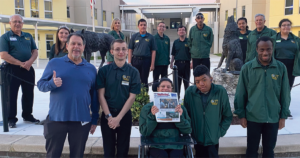
Any hopes for a light rail line connecting the Tampa Bay area have now taken a backseat, as local officials seem ready to embrace a 41-mile Bus Rapid Transit (BRT) system from Wesley Chapel to St. Petersburg.
That was the recommendation of Jacobs Engineering, which conducted a $1.5-million study funded by the Florida Department of Transportation (FDOT) on Jan. 19, when the study was presented to the Tampa Bay Transportation Management Area (TMA) Leadership Group in Tampa.
The proposed route would run along I-275 from Wesley Chapel to the University of South Florida, through downtown Tampa and the Westshore and Tampa International Airport areas and over the Howard Frankland Bridge into downtown St. Petersburg.
While the debate over fixing the transportation woes in Tampa Bay has raged for more than a decade, including two highly-publicized failed attempts at a light rail voter referendum in 2014 and 2016, BRT is seen as a quicker and cheaper option and a potential jump start to the development of a much-needed and elusive transportation system to help ease the area’s overcrowded roads.
“I think that’s what the citizens want — we need a solution now,” said Hope Allen, the CEO of the North Tampa Bay (formerly Greater Wesley Chapel) Chamber of Commerce.
A 9-mile CSX rail between USF and downtown Tampa also was considered as an option by Jacobs Engineering, but those construction costs were roughly $600 million, with $9-$12 million in annual operating costs, and would take 10 years to build.
That’s more costly and time-consuming than BRT, which has estimated costs of around $400 million for a project that would be ready in five years, with $5-$7 million in annual operating costs.
“This is not the ultimate end game for transit in the Tampa Bay region, nothing even close to that,” said FDOT District 7 Secretary David Gwynn. “What this would hopefully be is a first step that could start to generate transit ridership, that would be able to get federal money started into the process and build ridership. Hopefully over time, those other elements, whether they are bus, rail or some form of technology that evolves, can be built upon this project.”
BRT systems in other cities and countries are considered much higher quality than your typical bus routes, and are defined by their dedicated lanes, which avoid congestion and make for faster travel.
In Tampa Bay, the BRT route would have a dedicated lane for a majority of the route, although that lane may be only a reinforced shoulder in certain parts, or toll lanes planned for the new Howard Frankland Bridge. In some areas, a dedicated lane will need to be constructed. But, by converting many of the existing lanes into BRT-dedicated lanes, as opposed to building a rail line to cover the entire 41 miles, would reduce the cost of the project by $2 billion.
And, BRT utilizes sleeker, more modern-looking buses equipped with WiFi, making it a more palatable choice for those who have previously ridden on regular HARTline buses.
“Can we not use the word bus?,” asked Kathryn Starkey, Pasco’s District 3 county commissioner. “We need a sexy, cool, futuristic name.”
The three-county BRT line recommended by Jacobs Engineering would have 17 intermodal stations, which would serve as transportation hubs, and have been shown to spur growth in the urban areas where they are placed. The proposal shows stations in Wesley Chapel at S.R. 54 and I-75, as well as one at S.R. 56 and Wesley Chapel Blvd.
Allen said she was pleased with the reception BRT has received, and that Wesley Chapel was included. Allen says thousands of residents in Wesley Chapel and Pasco County leave for work in Tampa and St. Petersburg every day.
“For them,” she says, “this is pretty appealing.”




No comment yet, add your voice below!